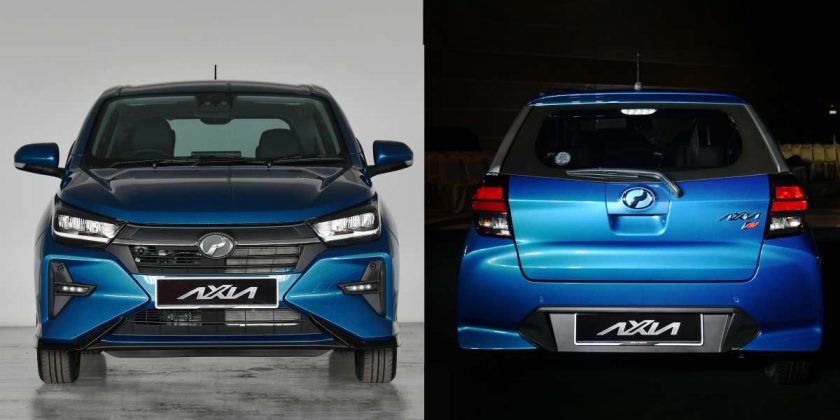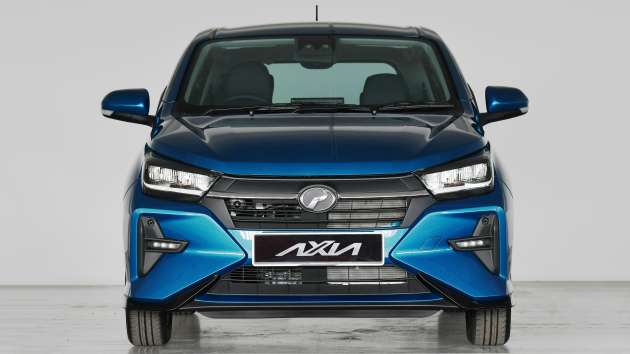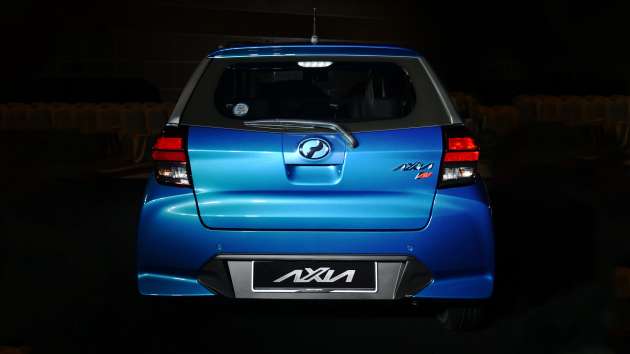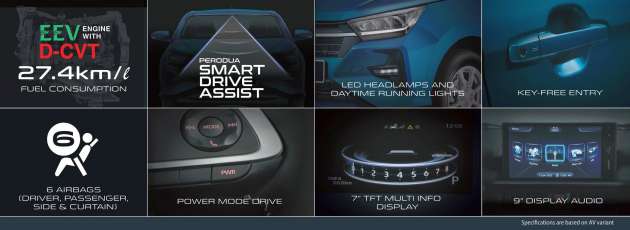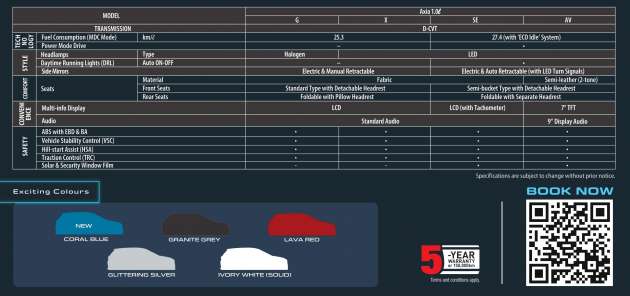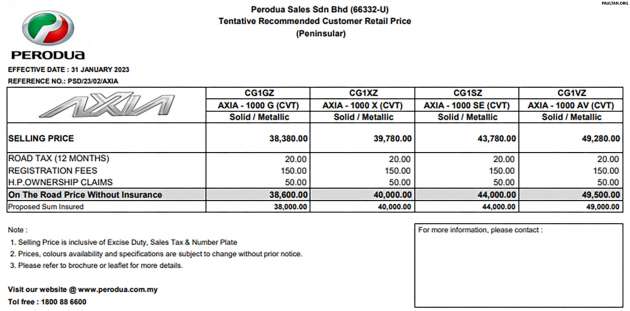You’ve seen the first images of the 2023 Perodua Axia from today’s media preview event, and here are some fresh official teaser images to go along with it. Put these front and rear pieces on the jigsaw puzzle of the camouflaged cars we showed you earlier, and you’ll have a pretty good idea of how the D74A looks unclothed. Go on, play now.
Speaking of that, we can’t show you the full car yet, as that’s embargoed till the February 14 launch date. As for the new Axia’s interior, you’ve already seen the horizontal-style dashboard with a “floating” screen in its full glory. Very current and very nice for an entry-level car, I’m sure you’ll agree. See more below.
As you’d already know, the 2023 Axia sits on the Daihatsu New Global Architecture (DNGA) platform and is powered by a carryover 1.0 litre VVT-i engine. The 1KR-VE three-cylinder is a naturally-aspirated unit with 67 hp/91 Nm – no turbo as rumoured.
Instead, the big news in the powertrain department is the EEV engine’s partner, which is the D-CVT gearbox. Just like in the Myvi facelift, the stepless auto replaces the long-serving four-speed torque converter automatic transmission, bringing improvements in both fuel efficiency and performance. That’s a win-win at both ends of the scale.
First introduced in the Ativa, D-CVT stands for Dual-Mode CVT, the world’s first split gear CVT system. Basically, the unit combines belt drive with a gear drive for improved FC, acceleration and quietness.
From rest to medium speeds, the D-CVT functions like any other CVT, with engine torque going through a torque converter (like Toyota and Honda CVTs; Proton’s Punch CVT uses a clutch pack) and into the input pulley, before being transferred to the output pulley via a belt and then to the wheels. At higher speeds, D-CVT shifts into its split mode, engaging the gear drive to provide more efficient power transmission (less energy loss), while the rotation to the belt drive is decreased significantly. More on the D-CVT here.


With the CVT, fuel consumption is now 25.3 km/l, or up to 27.4 km/l with the Eco Idle auto start-stop system. These claimed figures are in what P2 calls the Malaysian Driving Cycle (MDC), which supposedly follows local road conditions and driving patterns. By the way, in the Myvi facelift, FC was 5% better with the 4AT-CVT swap (engine was unchanged) while 0-100 km/h acceleration improved by a whopping 20%, so expect a more economical and faster new Axia.
This new 1.0L D-CVT combo is standard across the new Axia board, which has four variants – G, X, SE and AV. The latter two variants add on Eco Idle and Power mode (PWR button on the steering’s right spoke, as per the Ativa).
You can tell the SE and AV apart from the outside thanks to LED daytime running lights, housed in a sideways T-shaped trim, which reminds me of the pre-facelift G20 BMW 320i Sport. Yes, LED DRLs are now available on the Axia. LED headlamps are standard from the X onwards.
The wing mirrors on all Axias are electric, but those on the SE/AV are auto retractable. Keyless entry is standard from the X onwards, and the graphic shows an electrostatic sensor, where just a touch will do instead of a button press. This is as per the Ativa and an upgrade from the Myvi’s black button.
Another feature highlight is the digital meter panel. The range-topping AV gets a 7.0-inch TFT instrument panel. That’s the same size as the MID in the Ativa and Alza, and the flyer shows a “3D ring” tachometer, so it’s probably the same unit coupled with a digital speedo. Also exclusive to the AV is a floating-style 9.0-inch display audio. Once again, that’s the same size as the Ativa’s and the graphics look similar as well. Every other variant gets a non-touchscreen radio.
Moving on, there are two levels of seats, divided between G/X and SE/AV. The cheaper variants get “standard” front seats and rear seats with “pillow headrests.” The higher end variants get “semi-bucket” front seats and “separate headrests” for the rear seats. As for upholstery, only the AV gets two-tone semi-leather covers. Solar and security window tint is reserved for the SE and AV.
These days, we expect new Perodua models to have massively upgraded safety over previous versions, and the Axia doesn’t disappoint. The top variant will have six airbags (dual front, side and curtain), a big jump from its predecessor, which maxed out at two front airbags.
Perodua Smart Drive Assist (PSDA) is also available. Advanced Safety Assist (ASA, which includes autonomous emergency braking, AEB) made its debut in the 2019 Axia facelift, and it should also be available here – we’ll have to wait to see which variants get ASA. Meanwhile, VSC is standard across the board.
By the way, the PDSA umbrella also covers the “Driving Assist” pack, which has lane keeping functions, blind spot monitoring and adaptive cruise control – it remains to be seen if the new Axia has these semi-autonomous features in the AV, or will it be just ASA. In any case, it’s a lot of safety for the money, and this being a new DNGA product, expect five stars in the ASEAN NCAP crash test.
Finally, colours. The new Axia can be had in five shades – Granite Grey, Lava Red, Glittering Silver, Ivory White (solid) and the new Coral Blue. The latter is the launch hero colour for the D74A.
As announced on January 31 when the order books opened, estimated prices are from RM38,600 for the G, RM40,000 for the X, RM44,000 for the SE and RM49,500 for the AV, all on-the-road without insurance. That’s higher than before, so you do pay more for a bigger car with extra features. For reference, the launch prices of the 2019 Axia facelift were RM34,990 for the GXtra with VSC and RM43,190 for the AV.
There’s no kosong Axia E with a manual gearbox a.k.a. the driving school spec at launch, but Perodua has confirmed that a cheaper Axia with a stick shift will be launched after Hari Raya Aidilfitri, which falls in April. Also not in the D74A line-up is the SUV-inspired Style variant. Later, perhaps.
What’s your take on the new 2013 Axia’s looks and specs?
Source: Read Full Article
